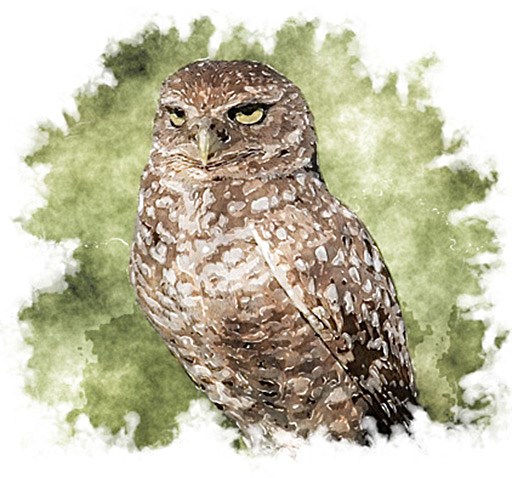
A male will woo a mate to his burrow with his calls during the late March to April breeding season. The underground burrow may be naturally made, abandoned by another animal, or excavated by the owl. They line the nest with a variety of materials, including cow dung, which helps control the burrow's micro-climate and attract insects as a food source. Four to twelve eggs (averaging 9) makeup the clutch and are laid individually over a couple of days and then incubated for 3-4 weeks. Both parents participate in raising the young. The young begin to fledge a month after birth. The "who-who" call is mainly given when defending its territory or by a male to attract a female to his burrow. Other sounds include clucks, clattering, screams, and a rattlesnake-like hiss from juveniles. These calls are usually accompanied with the bobbing of their head, which they tend to do when excited or agitated. | ||

Range Map

The owl's many subspecies are distributed throughout the Americas. They're found from the southern parts of western Canada to Tierra del Fuego and many places in between. Birds that breed in the more northern areas usually migrate to the southern US or Mexico during the winter months. Typical habitats include grasslands and prairies, plus altered habitats such as airports, fields, and golf courses. They may be found closer to human activities, nesting near roads, homes, and irrigation canals.
Fast Facts
Resources
Threat Level provided by the International Union for Conservation of Nature's (IUCN) Red List. http://www.iucnredlist.org/
| ||
Last updated: December 14, 2022
